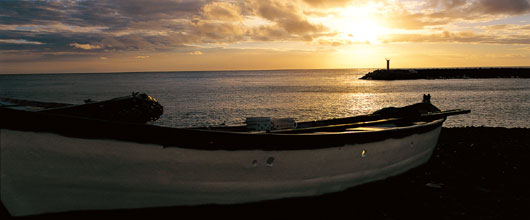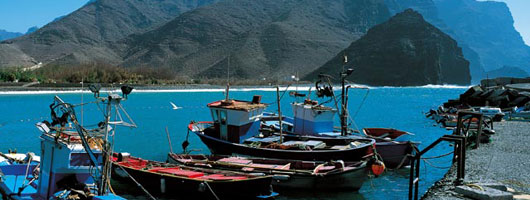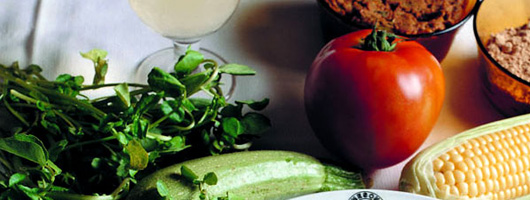The local festivities of San Nicolás take place between the 1 and 15 September with a procession in honour of the saint through the main streets of La Aldea de San Nicolás. They end up with a romería-ofrenda (offering) to the patron saint, in which folklore, the best handicrafts and cuisine all play a part.
On the day before the festivity is the Bajada de la Rama, which has been handed down from the Canarian aborigines, who came down from the mountains to the sea in times of disasters and droughts to pray for rain.


And finally, on 11 September, the very popular Fiesta del Charco is held, reviving the ancient custom of the Canarian people to embarbascar (practise an aborigine fishing technique)in the pools on the coast and which attracts a lot of people from other municipalities.
The Fiestas del Carmen on 16 July are also popular in the La Aldea as this Virgin is co patron of the municipality and its inhabitants are extremely devoted to her.
In Carnival time, La Aldea de San Nicolás has recovered traditional elements such as masks, old clothes, faces covered with a veil or crocheted cloth, holding fishing rods and a little basket in their hands. The children also dress up in goat skins and they cover their hands, legs and faces with boot polish, accompanied by an adult dressed up as a shepherd. Another of the festivities that is becoming popular on the island is the Ranchos de Ánimas y de Navidad, a cultural revival which was reinstated in the municipality some years ago and which at present is more like the Rancho de Pascua. The Ranchos de Ánimas are musical groups whose roots lie in the cofradías de animas (brotherhoods of souls) of the 17th and 18th centuries.
In this part of the island was one of the most important aborigine settlements stretching along the main basin and its network of ravines. At the mouth of the Barranco de la Aldea lay the most important settlement, namely El Poblado de Caserones.

In pre-Hispanic times some monks from Mallorca came ashore at the Playa de La Aldea (La Aldea beach) and built a chapel in honour of La Aldea de San Nicolás. After the conquest of the island by the Castilians, the chapel was closed and was replaced by another one further up the valley. It was to be named an independent parish in 1783.
La Aldea de San Nicolás finally became a modern municipality in 1812 but during the 17th century the Marqueses de Villanueva del Prado had acquired most of the land. The lack of precision as far as the boundaries of this large estate were concerned and the continual occupation of land by this family gave rise to a socio-agrarian dispute which lasted for almost three centuries. In 1927 the Ministro de Gracia y Justicia (Minister for Grace and Justice), Galo Ponte, visited La Aldea de San Nicolás and passed a verdict in favour of the townspeople.
La Aldea de San Nicolás is situated in the west of the island of Gran Canaria and it is the third largest municipality, covering a surface area of 139 kilometres.
It stretches back from the coast inland and its maximum altitude is 1.440 metres above sea level at the Montaña de Los Hornos (Inagua).

La Aldea de San Nicolás is surrounded to the north and east by cliffs cut by ravines and it stretches from north to south along an uneven coastline of 33 kilometres in length. It is a high, rugged, rocky coastal strip whose beaches or small coves are located at the mouth of the ravines. This volcanic formation has suffered and is still suffering from erosion. It composes a geomorphological area of great scenic beauty and enormous scientific interest, as it is situated in the oldest part of the island.
At the beginning of the 20th century, following a socio-agrarian dispute which lasted in La Aldea de San Nicolás for centuries, the municipality experienced an increase in economic growth and in population. Agriculture for export took off with the cultivation of one crop – the tomato.
During the Civil War this expansion suffered a recession and other crops were introduced for self-sufficiency as well as sugar cane which triggered a local rum industry.

The geographic isolation of the municipality ceased to exist when the road from Agaete to La Aldea de San Nicolás was opened, thus giving rise to a new period of expansion in which the commercialisation of the tomato began to be controlled by local family businesses.
In the sixties Agricultural Cooperatives were set up and became a sound base for the local economy, introducing significant technological improvements, such as computerised watering systems, hydrophonia (cultivation without soil) and aerophonia (air cultivation).